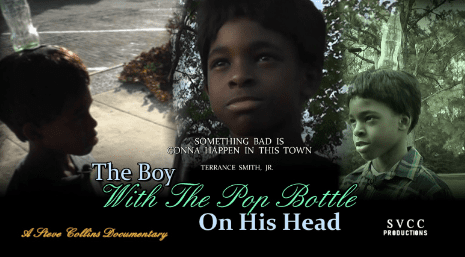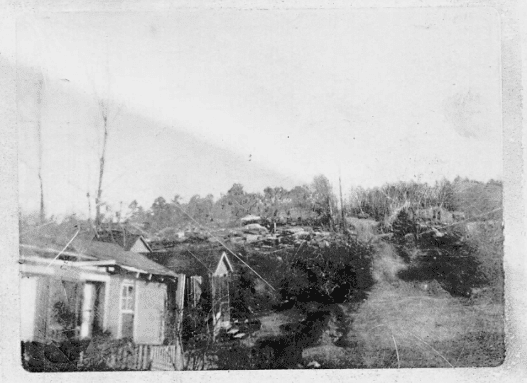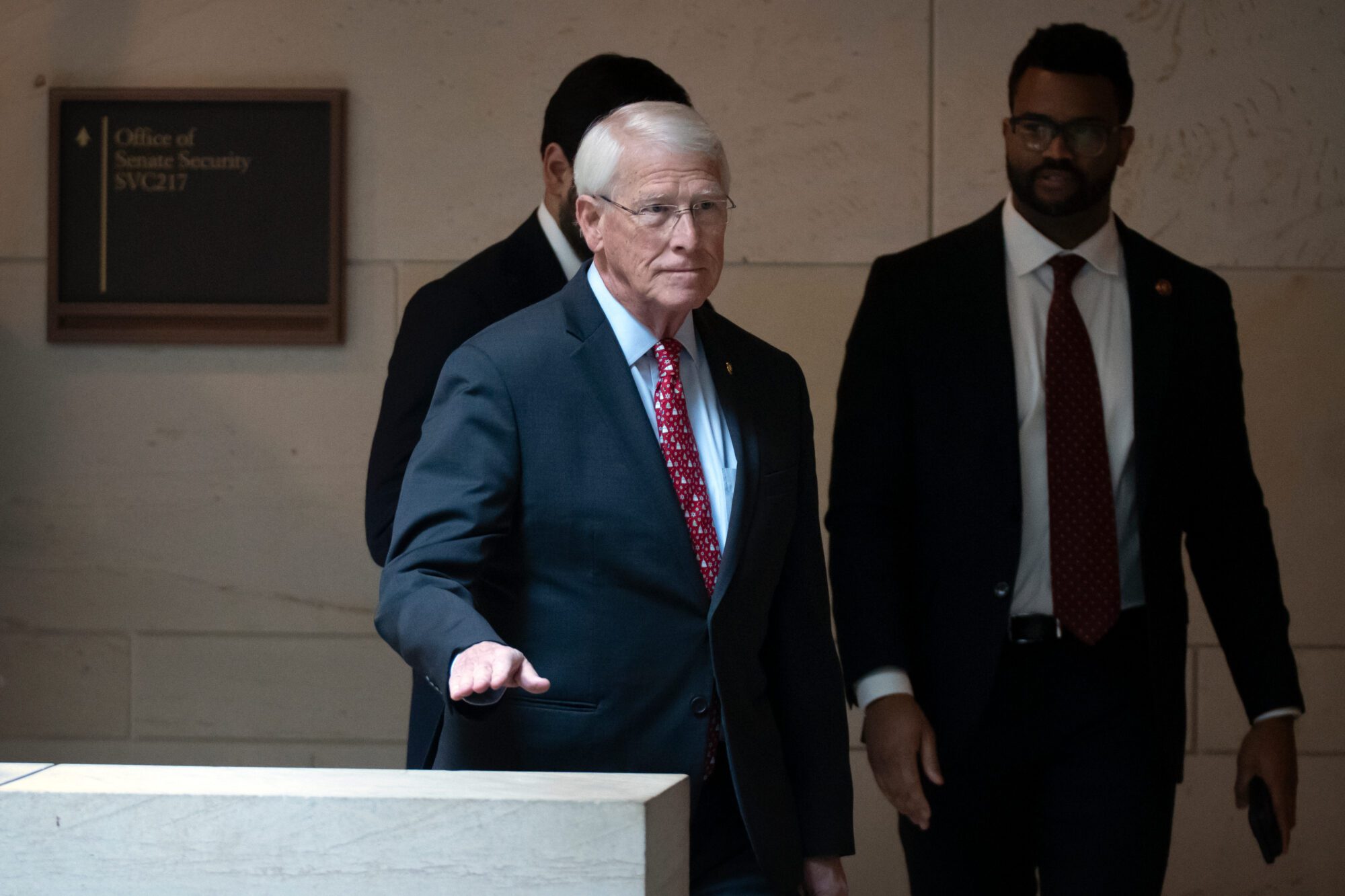
- Steve Collins is a documentary filmmaker from Hazlehurst. As a kid, he remembers people talking about the boy, and it is a story he can’t shake.
Editor’s Note: While culture stories that run on Thursdays in Magnolia Tribune typically have a food and/or beverage focus, this one is a bit different. It involves a Coca-Cola bottle, and as you may have read in our June 6 culture story, Coca-Cola was first bottled in Vicksburg. But this story is a bit of a departure. It is a fascinating story, researched and written by Courtney Ingle. We hope you enjoy learning about ‘The Boy with a Pop Bottle on his Head.’
Imagine this: a boy approaches you, balancing a Coke bottle on his head. He tells you something terrible will happen, then… wanders off. What do you do?
Most likely, nothing. You might find it strange; shoo him along and go about your business. Many in Hazlehurst, Mississippi, did just that when a young boy came with a warning of widespread destruction. According to filmmaker Steve Collins, it wasn’t until his grim predictions came true that people wondered if there was more to the boy’s wild antics.
Steve Collins is a documentary filmmaker from Hazlehurst. As a kid, he remembers people talking about the boy, and it is a story he can’t shake.
“As a kid, I never got a chance to see him,” said Collins. “I always came close, but I never got to see him. I always heard this good story about a boy with the pop bottle. I always wondered why nobody ever told the story about him. That’s how I got into filmmaking.”
The Boy with the Pop Bottle on His Head
According to Collins, a boy balancing a pop bottle on his head appeared out of nowhere in Hazlehurst around 1966. He was about ten years old, and no one knew anything about him besides his uncanny balancing abilities.

“He could walk, run, turn flips, and all kinds of interesting things with that bottle on his head, and it never fell off,” said Collins. “People tried to knock it off, but they couldn’t knock it off. It mesmerized a lot of people, but a lot of people were scared of him, too.”
The balancing act got people’s attention and somewhat overshadowed what Collins called the boy’s mission.
“And that was to warn people about something bad that was going to happen to this town,” said Collins. “He would come around over a period of three years, in 1967, 1968, and 1969. He would come and go, but he always preached that same message.”
But as the boy continued to venture into Hazlehurst with his message and bottle on his head, time would pass, and nothing destructive ever happened. Like the boy who cried wolf, the boy with the pop bottle on his head was ignored when his repeated message yielded no results.
Not only was he ignored, he was beaten.
“People got to the point that they were mad with him, and many people beat him up,” said Collins. “They beat him tremendously, especially here in Hazlehurst. Everywhere he went, he was beat up. Crystal Springs, Hazlehurst, and Brookhaven.”
The violence against the boy grew so severe that the local authorities started arresting him to protect him from the public.
“It got to the point that people wanted to kill him here in Hazlehurst,” said Collins. “So he’d come around and get locked up, and they’d keep him a few days and let him go. And then he’d leave, and he’d eventually come back.”
Collins added that the boy would freak people out. He’d just wander around; he didn’t work – he just spread his message of impending doom to anyone who would listen.
“I have interviewed many people who told me what this boy did and how he did it,” said Collins. “And he could predict people’s lives. He’d tell them they’d die at a young age, and they did. He’d tell people without knowing them when their birthdays were.”
According to Collins, the boy was also a mathematical genius and could answer made-up mathematical questions on the spot despite having little to no schooling. After all, he’d been traveling between Crystal Springs, Brookhaven, and Hazlehurst by foot from when he was just ten.
“He quit school around 3rd or 6th grade, but I interviewed people who went to school with him, and they said he was just a marvel to the teachers,” said Collins.
Where the story gets wild
The boy with the pop bottle on his head was apparently a psychic mathematical savant with an uncanny ability to balance Coke bottles on his head. Collins said he was illiterate but knew the entire Bible, from Genesis to Revelation. Others filmed in the documentary said the boy had healing abilities and people were healed following his prayers.
The boy with the pop bottle on his head would come into Hazlehurst and tell people something bad would happen to the town. And until January 1969, people doubted his predictions.

But on January 23, 1969, a catastrophic EF4 tornado struck Hazlehurst, wrecking the town, sending droves of people to the hospital, and killing 32 others. This deadly storm was not predicted by local weather forecaster Judy Moon Denson, and the anger towards the perceived missed call was brewing.
After the storm, the boy with the pop bottle was not seen in Hazlehurst again. He just disappeared. Some thought maybe he died in the storm, some thought he moved on. But he wasn’t seen again, until over 40 years later.
The boy, the name, and the apology
Fast forward from late 1960s Hazlehurst to beyond the turn of the century. In the 2010s, Steve Collins started this journey of telling the story of The Boy with the Pop Bottle on his Head. He began his documentary work with interviews, gathering stories and directing reenactments for the story. At this point, the boy hadn’t been seen in decades.
But one day, after research and searching, the boy was found. He was now fully grown, confined to a wheelchair, living with his cousin, Alcia Wilson, in Natchez.
Cordell Leake. That was his name. At this point, The Boy with the Pop Bottle on His Head was now a living, breathing person. The legend now had a living legacy. He was there, in the flesh. A story had come to life.
Collins, along with others, worked to repay Cordell for the torment he had faced as a young child who was simply trying to warn a small town of impending doom. In November 2023, Cordell Leake was given a key to the city and a public apology for his mistreatment. Judy Moon Denson also received recognition and an apology for the backlash she received over not predicting the tornado, though she was not in attendance at the ceremony.
Cordell is now 68 years old, and though still living in Natchez, is an undeniable historical staple in the city of Hazlehurst.
What’s your take?
Collins has repeatedly called Cordell Leake a prophet from God, and his sentinments have been repeated by some of the people in the documentary. He’s been called anything from a nuisance to a healer, a prophet to “just a kid.”
This writer’s thoughts? I hesitate to call anyone on this side of eternity a true prophet, no matter the age. I don’t believe that people heal others, but I do believe in God, the ultimate healer, and that He answers prayers requesting healing. The person praying that prayer simply made a request for healing. They are not the healer. Anyone, from Billy Graham to your own pastor to the neighbor down the street to The Boy with the Pop Bottle on his Head could pray a prayer and healing take place; but they are not the healer.
And as far as the predictions go? Call me a skeptic. A broken clock is right twice a day. One can make a general prediction that a bad storm will hit the town, and especially in Mississippi, they’re bound to be right at some point. Now, I’m not God, so I can’t sit here and tell you with 100% certainty that he didn’t send Cordell to warn the town. But just as easily as I can say to you that I’m 100% positive that He didn’t send Cordell. Well, that swings both ways, right?
And as far as the local meteorologists not predicting massive tornadoes; that’s not a unique situation. February 10, 2013, a massive tornado struck the city of Hattiesburg, causing widespread damage throughout the city, and that day, there was only a “mild chance” for severe weather.
What I do know is this: a city united to apologize to a man, once a tormented boy, and to honor his impact on the community, no matter how unique it was. The people of Hazlehurst definitely have a story to tell, one that is uniquely their own, and one that is deeply embedded into their culture. There’s no denying the impact The Boy with the Pop Bottle on his Head had on the city of Hazlehurst, and now, his legend and legacy will far outlive him.
The Boy with the Pop Bottle on His Head is available for streaming on Projektor.











